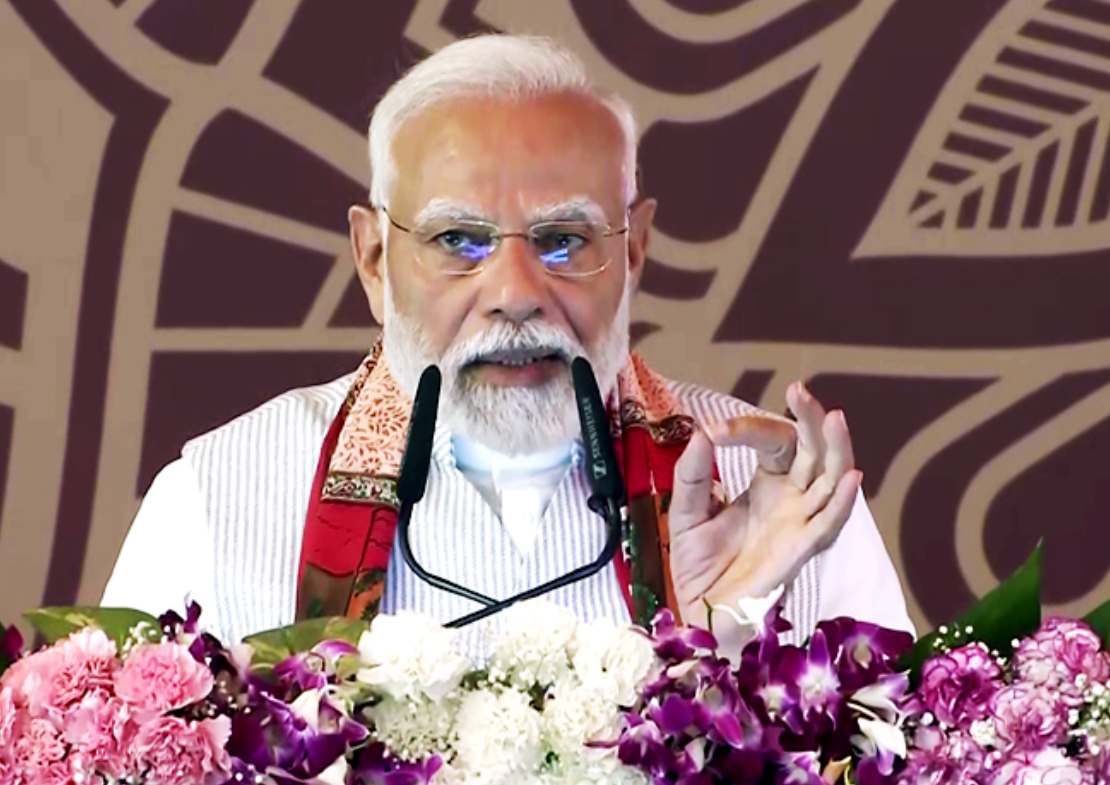India is facing steep 50% tariffs from the Trump administration, putting its exports to the US under pressure. While the immediate impact is manageable, the long-term challenge lies in securing new trade deals, diversifying markets, and accelerating reforms. Despite warmer ties with Russia, India’s future growth depends on deeper integration with the US and EU, where exports already far exceed those to BRICS. The tariff shock may hurt labor-intensive sectors, but it could also push India toward much-needed land, labor, and market liberalisation.
Despite Tariffs from Trump, India’s Future Lies in More Trade, Not Less
India has once again found itself in the crosshairs of Washington’s trade policies. From once being hailed as a potential winner of the Trump-era trade war, New Delhi has now become one of the biggest targets of the US President’s tariff campaign. The Trump administration has already imposed a 25 percent tariff on Indian goods, and to add to the pressure, another 25 percent levy has been announced, effective immediately, on the grounds that India continues to import crude oil from Russia.
The decision effectively raises the total tariff on Indian exports to the United States to 50 percent, putting them on par with the tariffs previously imposed on China. For India, this poses a significant challenge as the “China+1” strategy, where multinational companies look to India as an alternative supply chain hub, becomes less competitive for the US market. In contrast, most Southeast Asian countries still face tariffs of around 20 percent, making them relatively more attractive trade partners.
Yet, the big question is whether the additional 25 percent tariff will stick. With no sign of an immediate end to Russia’s war in Ukraine, the justification for the secondary tariff remains in place. However, many analysts argue that this penalty is more temporary in nature. The real debate is not whether India will succeed in lowering the rate back down from 50 percent to 25 percent, but when that reduction will happen.
Since 2022, India has sharply increased its purchases of Russian crude oil, surpassing even China in terms of volumes. New Delhi considers these imports vital, both to keep global oil prices in check and to sustain its long-standing strategic relationship with Moscow. But despite the closer energy ties with Russia, India’s future path to economic growth and expanded trade lies not with BRICS, but with the West, especially the European Union and the United States.

India’s annual exports to the US already exceed the combined value of its exports to all BRICS countries. At the same time, India runs a massive trade deficit of $209 billion with BRICS, about half of it with China alone. In fact, in Asia, India suffers from trade deficits with nearly every major economy except the Philippines. By contrast, exports to the US and EU are already double the exports to BRICS, highlighting why New Delhi’s long-term strategy must align with Western markets.
The direct impact of the 50 percent tariff, while painful, is not catastrophic in the short term. The US is India’s largest trade partner, with shipments totaling $79 billion, which accounts for around 2 percent of India’s GDP. Out of this, $45 billion in goods — roughly 1.2 percent of GDP — are vulnerable to the higher tariff. The most affected sectors will be labor-intensive industries such as textiles, garments, and gemstones. While this is a manageable shock in the near term, the government is already preparing countermeasures.
Reports suggest that New Delhi will streamline the Goods and Services Tax (GST) in the upcoming budget to boost domestic consumption. A further 50 basis point cut in interest rates is also being discussed to shore up demand. Additionally, state-owned banks and government support schemes are expected to cushion the blow for the most affected exporters.
International investors have also taken note of India’s relatively stable macroeconomic position. S&P recently upgraded India’s long-term sovereign rating to BBB from BBB-, citing improved fiscal governance. However, there is no free lunch. Any attempt to cut GST and provide targeted relief to stressed sectors will raise financing needs in the short term, testing New Delhi’s fiscal balance.
In the longer run, India’s economic resilience will depend on how successfully it can diversify market access and strike new trade deals. Negotiations for a free trade agreement with the European Union are ongoing, while the India-UK FTA has already shown progress toward gradual liberalisation of traditionally protected markets. Yet many sensitive sectors such as agriculture, dairy, and automobiles remain shielded from global competition, delaying deeper reforms.
Another looming risk is whether India can secure key exemptions for industries like pharmaceuticals and information technology, which are crucial to sustaining exports to the US. If exemptions are rolled back, the damage could extend beyond short-term growth to foreign direct investment flows, particularly in manufacturing. Even as India remains an attractive investment destination for its large domestic market, the continuation of steep tariffs will make it far less appealing as a hub for export-oriented industries targeting the US.
The bigger picture is clear. India’s labour force of nearly 600 million in 2023 is projected to rise to more than 720 million by 2040. Yet, only 11 percent of Indian workers currently enjoy formal employment. Any setback in job creation through manufacturing and export-led sectors will have serious social and economic consequences.
Paradoxically, India’s weakness in labor-intensive manufacturing exports — despite being the world’s most populous country — now serves as a small cushion. With relatively low global market share in these sectors, the direct hit of the 50 percent tariff remains contained. Still, the long-term solution cannot rely on low exposure. To achieve sustainable growth and create jobs at scale, India must deepen trade integration, attract new investment, and push overdue reforms.
If there is a silver lining to this tariff shock, it is that external pressure may force India to accelerate long-delayed changes. Land reforms, labor law modernization, and greater liberalisation of markets will be essential to unlock India’s competitive potential. Tariffs may have raised short-term obstacles, but they also serve as a reminder that India has yet to fully punch its weight in the global economy.
Disclaimer:
This article is for informational purposes only and reflects current global trade and economic developments. It should not be considered as financial, investment, or policy advice. Readers are encouraged to consult official government releases and professional experts before making any business or investment decisions.

